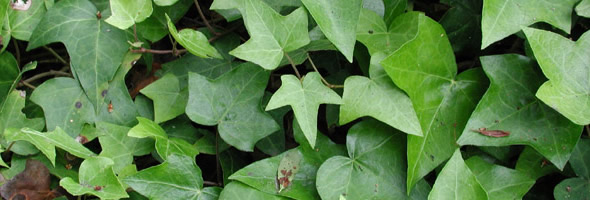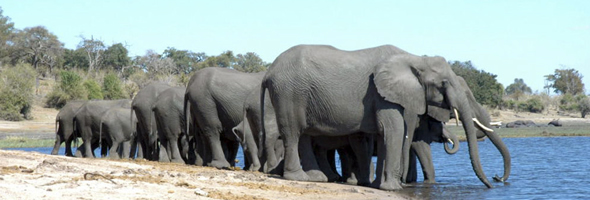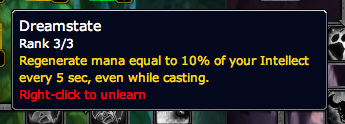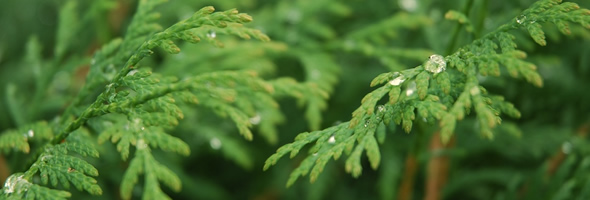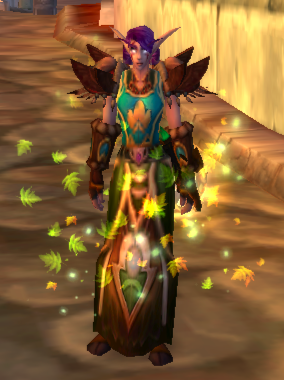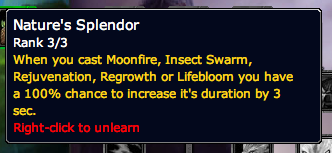Restoration druids have been through the wringer of late, and many otherwise content stalks of broccoli, me included, have even thought of rerolling in the face of severe nerfs to Lifebloom and Flourish. However, the developers have, as it were, turned over a new leaf (yuk yuk yuk) and have modified both Wild Growth (the new Flourish) and Nourish to make them more attractive to the Restos of Wrath. This article takes a look at healing druids now, as of October 2, and speculates about our future as competitive PvE raiders.
First, the Nerfs
What was wrong with druids, you ask? After being strong early in Beta and getting one of the things we’ve always wanted, an AoE heal, Restoration druids got hit up one branch and down the other with a big, nasty nerf bat. Both Wild Growth and Lifebloom, two spells that druids had planned to put in heavy rotation for the expansion, received reductions to their healing done and had their mana cost raised. We were, however, left with a strong Regrowth, and a particularly overpowered glyph which increased the effectiveness of the initial burst heal by 50% if the Regrowth HoT effect were still on the target. The Regrowth glyph has, incidentally, been nerfed as predicted to a 20% bonus, and to add insult to injury, build 9194 also included a nerf to Nature’s Splendor, reducing the duration of a talented Lifebloom to 9 sec. instead of 10. For another perspective on the druid nerfs and buffs, take a look at Phaelia’s post on Resto4Life–as always, Phae has an interesting–and beautifully illustrated–take on things.
The nerfs brought out many high-quality posters to the Beta forums, many of whom posted hard numbers from raid encounters in Beta. I even joined in the pleas to Ghostcrawler to re-evaluate the druid class for effectiveness in end-game raiding. GC reassured forum posters time and time again that druids would be fine for 5-mans or entry level raids, but I remained worried. My focus has never been entry-level or casual content. I want to be competitive in 25-man raiding, and I want to remain strong as my guild progresses through tiers of content. I’m not the best druid healer out there (in my opinion, that’s Bonkers, CD’s other tree and my personal hero), but I do have the skills to handle a 5-man or a heroic even if my class is not optimized for it. I don’t need any new talents for 5-mans–I’d like those abilities to help me in the more difficult raid environment. As the healing lead of a raiding guild, I always want to see my team make smart choices in terms of play and rostering. I have to admit, I did think about rerolling, and I took a serious look at shamans, pallies, and priests in Beta. For what it’s worth, priest is looking very good to me at the moment, as are shamans, despite the mana issues. I would–and I still will–change mains if it turns out that taking a restoration druid or two to endgame raids handicaps the group. I do have a paladin at 70 now, and so that might be a more realistic option for me than for others.
The Light at the End of the Tunnel
However, before I could log into my 20-something baby shammy and take her for a spin in Ashenvale, Ghostcrawler made another series of posts. First, on October 1, there was hope:
We are going to “run the numbers” again on Wild Growth and Nourish. What I mean by that is we’ll do some tests and compare them to similar heals and to other druid spells.
Wild Growth was nerfed pretty hard and I have some confidence that we can bring it up, though probably not as high as it was before. We’ll have to see about Nourish.
We don’t want to mess with Regrowth much more since it is now a button that seems worth pushing. We’re standing by our Lifebloom changes for now. It just felt like the solution to every healing situation that druids encountered. I suspect druids will still use it in its current form, but we’ll see.
Sorry I can’t offer anything more concrete than that. Making promises until I actually see the changes made can be pretty dangerous and just ends up frustrating the community in those situations where we can’t deliver.
And then, yesterday, a promise:
Here are the changes we’re making next patch. See how they feel.
Wild Growth: Coefficient and healing increased. Mana cost decreased. Cost should be about the same as Circle of Healing. It doesn’t heal instantly, but will heal for about double what CoH does over its duration.
Nourish: Reduced mana cost by somewhere between 15 and 20%. This is supposed to be your Flash Heal, but we recognize that it doesn’t have the same versatility — you can’t just drop one on a wounded rogue or something since you need the hot up first. Hence the lower price.
Druids have quite an arsenal of healing spells now, and it can be tricky to find niches for all of them. 🙂
I was very happy to hear this news, and I was particularly pleased that it came from Ghostcrawler. It has long been my opinion that this particular blue poster is a class act. She’s been fairly attentive to restoration druids, even while assuring us–up until last night–that our healing was just fine, even strong, while the numbers clearly said otherwise. I don’t think the devs are out to get us, by any means–I just think that misdirection and even a little truth-obscuring is part of the jobs. “Class balance” is mysterious, and the game company naturally has different priorities from the players. In any case, here’s my reactions to the promised changes to Wild Growth and Nourish.
1. Relief
I do think druids will be more effective now. If the change is significant, a Wild Growth build will become more attractive than a Dreamstate build at 80. This is a good thing, because I really didn’t want to have to dip that far into Balance. I like keeping the feel of my character consistent, and I’ve been 61 resto for several months. As for Nourish, well, I can see a use for an improved Nourish as a tank heal. If I am maintaining a now cripplingly expensive Lifebloom stack on the tank, I may choose Nourish over Regrowth in a situation where I need the extra half second in order to be able to refresh Lifebloom on time.
2. Puzzlement
Ghostcrawler stated that Blizzard stands by the nerf to Lifebloom, although her language leaves the possibility of future revision open. The post seems to recognize that the nerf was severe. “I suspect that druids will still use [Lifebloom] in its current form” is a very different statement from “You will need to use Lifebloom” or even “You will still cast Lifebloom.” Nuance is very key here. For myself, I am waiting for theorycrafters–and my own experience in raids–to tell me whether Lifebloom is now worth the cost. Most Beta forum posters agree that even triple-stacked, it heals for paltry amounts compared to max-level tanks’ health pools. And this is early in the raiding game–I’m waiting to see how the numbers work out when we get beyond entry-level raids.
Does Lifebloom Have a Future?
This is the question on my mind as I ponder my post 3.0 spell rotation. Lifebloom has defined the life of a druid in BC. At lower levels of +heal it was quite weak, and I know I certainly relied on Healing Touch back when I was in blues and running Heroic Mech almost every night so Briolante could get his Sun-Eater (it took 14 runs, by the way). However, in Karazhan and beyond, I’ve had to tune my whole playstyle around casting and recasting this one spell. Because of the nature of the stacks, I have learned to time seven seconds in my head with stunning accuracy. I can feel the seven-second interval as it passes, just as I can feel the 1.5 second GCD (and yes, haste messes with my internal timing and as such, gets on my left nerve). No other healer is on quite this strict a clock.
The numbers from Beta testers indicate that for Lifebloom to retain any value, we will need to stack it on less players (perhaps just the main tank) and refresh it with precision timing, i.e. after it has gone through its maximum number of ticks. This spell is much easier to use with a little slop permitted in the timing. Right now, there are no severe mana penalties for refreshing a stack early, and even post 3.0, early will still be better than late. However, druid healers are going to have to get much, much better at timing their refreshes. Right now, we’ve got bigger fish to fry, and little things like moving out of the way of AoE’s deserve more of our attention than precise timing on Lifebloom refreshes. So yes, if druids persist in using Lifebloom, a little L2P will be in effect. We will have a particularly difficult time at 70 if we choose Wild Growth over Nature’s Splendor. That’s not bad in itself, but it’s not exactly “fun” either. In fact, Blizzard is designing away from precision timing for tanks, who have had it pretty bad in BC where that’s concerned (Shear, anyone?). I am puzzled, then, as to why they would want to restrict their healers’ spell choices more? I’m not sure that it’s all healers though–somehow I think it’s just the Vegetables.
So, Are They Going to Buff Lifebloom?
I’m going to disagree with Phaelia here and say no. I think they’re pretty determined to marginalize Lifebloom, or else, to make a Lifebloom stack the balancing point for a druid’s mana. Regardless of what’s said by Ghostcrawler and others, Lifebloom has only been problematic in PvP. In PvE, it was our bread-and-butter spell only because it had to be recast so often. That seems to have been an intentional part of the design. Now, I’m guessing that Blizzard regrets putting in the stacking mechanism. If I were the devs, I might strengthen Lifebloom considerably and stop it from stacking or blooming–I would make it an instant-tick Rejuvenation and nothing more. No shenanigans when you dispel it either! If you want to free your trees to cast other things while still using Lifebloom, this is the way to do it. Take us off the dreaded seven-second timer! (Hear, hear)
If a Tree Falls in the Forest . . .
I will say that I am glad that Resto is getting a little attention from Ghostcrawler. I believe that Blizzard has the best intentions as far as game balance is concerned, except that they might be overly stubborn about keeping mechanics for PvE and PvP the same. However, my experience from BC tells me that sometimes broken specs stay broken for months and years. Up until the Wrath Alpha, for instance, blue posters insisted that druids did not need an out of combat rez, even though it would certainly not factor into game balance. The only thing an out of combat rez does is make it easier for players to find groups and for healers to care for those groups. Boss fights are not affected at all, and the effects on pvp are marginal at best. The devs defended an aspect of design that was, in fact, just a punishment for hybrids. Moreover, as someone who’s played both Moonkin and Retribution Paladin, I know what it’s like to play an underdog character. There’s a very good reason I raised my warlock to max level–it’s nice to have a character in the lineup that gets a lot of development love. She’s my backup plan, just in case both Resto druids and Holy pallies become unplayable. I had, up until this point, though that Blizzard rather liked Resto druids. At least now, even with the nerfs, we are receiving some attention. However, I urge the Beta community to post, post, post, and to back up their complaints and suggestions with numbers when they can. Of course, that suggestion comes with the caveat that posters should always be respectful to the blue posters whose attention they covet and avoid out and out panicking or QQ. There is evidence that we have Ghostcrawler’s ear–so keep that constructive feedback rolling in.
